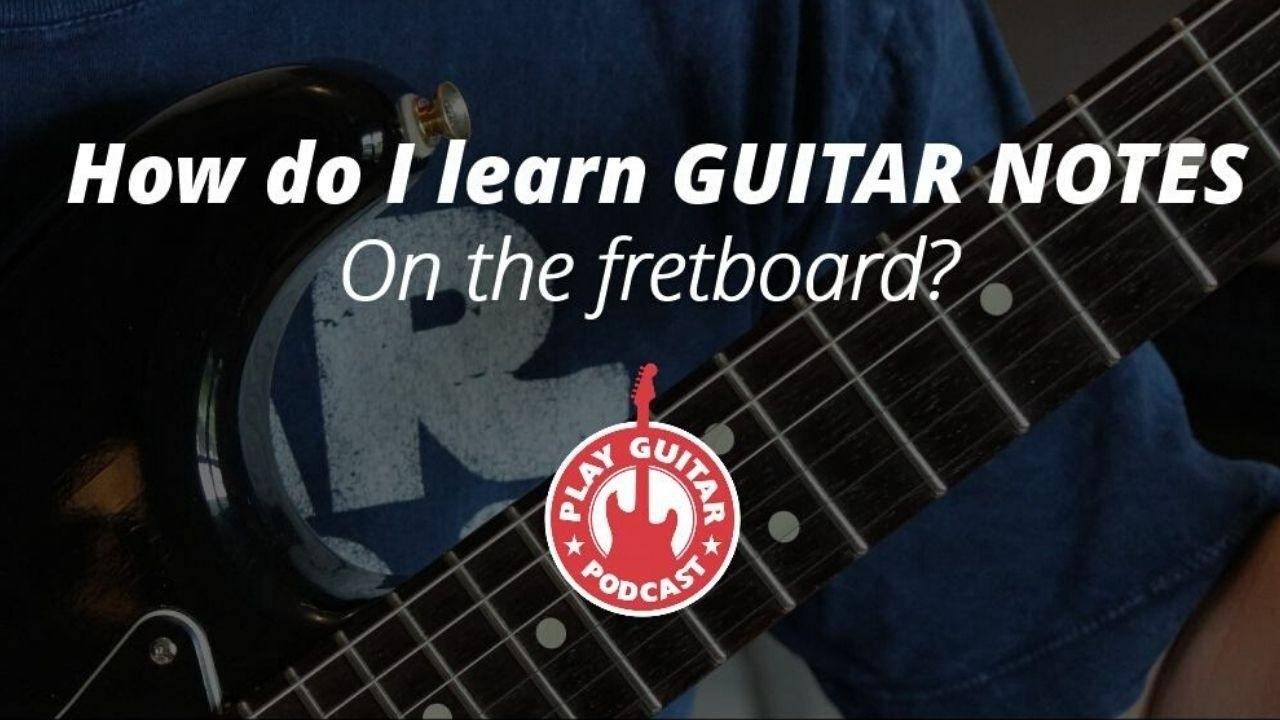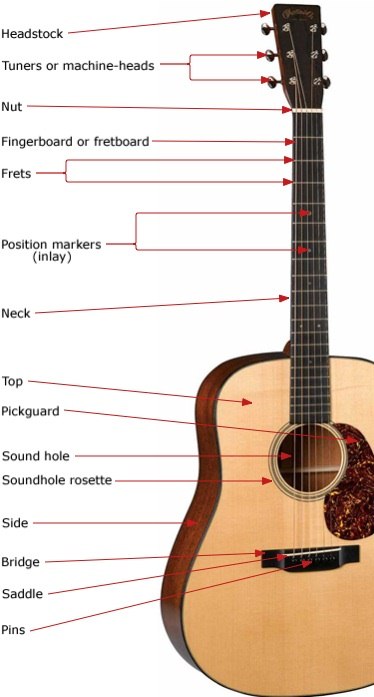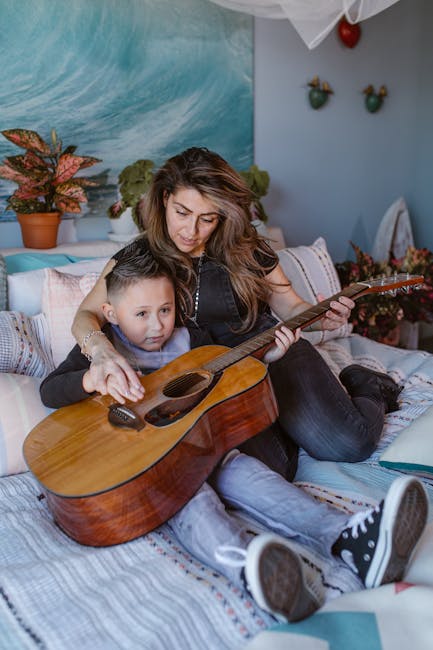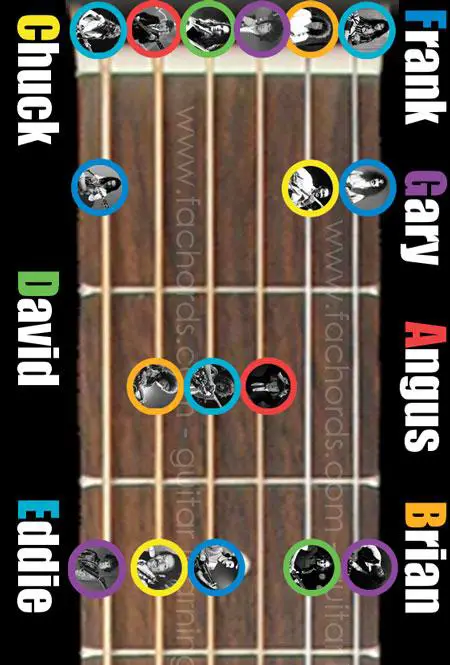Are you tired of feeling lost on the guitar-scales-important-top-reasons-revealed/” title=”Why are Guitar Scales Important? Top Reasons Revealed”>fretboard, like a lost traveler wandering aimlessly through the vast expanse of musical possibilities? Fear not, dear reader, for we have the ultimate guide to help you conquer the fretboard once and for all! With our step-by-step guide, you’ll be shredding like a rock god in no time. So grab your guitar, prepare your fingers for a musical journey, and let’s dive into the wild world of mastering the guitar fretboard!
Contents
- 1
- 2 Developing Muscle Memory: Fretboard Exercises for Beginners
- 3 Navigating Chords and Scales: The Roadmap to Fretboard Mastery
- 4 Applying Music Theory: How It Enhances Fretboard Fluency
- 5 Incorporating Ear Training: Recognize Notes and Chords by Sound
- 6 Practice Routines: Effective Strategies for Long-Term Progress
- 7 Exploring Advanced Techniques: Expanding Your Fretboard Knowledge
- 8 FAQs
- 9 Rock On!
layout-learning-the-notes-on-the-fretboard”>Understanding the Layout: Learning the Notes on the Fretboard
So, you want to master the guitar and become the next rockstar sensation, huh? Well, understanding the layout of the fretboard is essential if you want to shred like a pro. Let’s break it down for you.
First things first, each fret on the guitar represents a different note. We know, it’s mind-blowing. But don’t worry, we’re here to guide you through the madness. The musical alphabet goes a little something like this: A, B, C, D, E, F, G. These notes are repeated throughout the fretboard, creating a beautiful and chaotic symphony of sounds.
Now, grab your trusty guitar and take a good look at the fretboard. Notice those little dots or inlays? They’re not just there for decoration, my friend. These markers help you keep track of your place on the fretboard. Think of them as your musical GPS, guiding you through the wild world of guitar playing.
As you navigate the fretboard, remember that practice makes perfect. Take your time to memorize the different notes and their positions. And before you know it, you’ll be riffing and soloing like a true guitar god. So, strap in, buckle up, and get ready to rock your way through the fretboard jungle. You got this!

Developing Muscle Memory: Fretboard Exercises for Beginners
So, you’ve finally decided to take the plunge and learn how to play the guitar. Good for you! But before you can start shredding like a rockstar, you need to develop that all-important muscle memory. Luckily, we’ve got some fun fretboard exercises for beginners that will have you playing like a pro in no time.
First up, we have the classic spider exercise. This involves placing your fingers on four different frets of one string and then working your way up and down the fretboard. It may sound easy, but trust us, it’s a killer workout for those finger muscles. Before you know it, you’ll be crawling up and down the fretboard like a creepy crawly spider.
Next, try out some chord progressions. Start off with simple chords like G, C, and D and practice transitioning between them quickly and smoothly. It’s like a game of musical Twister – left hand on G, right hand on D, oh wait, now switch to C! Before long, your fingers will be dancing across the fretboard effortlessly.
And finally, don’t forget about scales. Yes, we know they can be a bit boring, but they’re essential for building muscle memory. Start with the good old pentatonic scale and work your way up to more complex ones. Pretty soon, you’ll be zipping up and down the fretboard like a pro.

So you’ve picked up the guitar and you’re ready to rock out like a true fretboard master, huh? Well, buckle up because we’re about to take you on a wild ride through the world of chords and scales!
First things first, let’s talk about chords. Chords are like the building blocks of music – they’re the key to creating those sweet sounds that’ll make your audience melt like butter on a hot summer day. And lucky for you, there’s a whole bunch of them to choose from! Major chords, minor chords, seventh chords – the list goes on and on. Here are a few tips to help you navigate the chord jungle:
- Practice makes perfect: Don’t expect to be a chord master overnight. Keep practicing and eventually you’ll be strumming those chords like a pro.
- Use cheat sheets: Can’t remember how to play that tricky D#7b5 chord? Keep a cheat sheet handy to help you out when you get stuck.
- Experiment: Don’t be afraid to try out different chord progressions and see what sounds good to you. Who knows, you might stumble upon the next big hit!
Now, onto scales. Scales are like the roadmap to the fretboard – they show you all the possible notes you can play in a given key. Think of them as your trusty GPS, guiding you through the musical landscape. Here are a few tips to help you master those scales:
- Start slow: Don’t try to tackle all the scales at once. Start with the basic major and minor scales and work your way up from there.
- Practice with a metronome: Scales are all about precision, so practice with a metronome to keep your timing on point.
- Get creative: Once you’ve mastered the basic scales, don’t be afraid to experiment with different modes and variations. The sky’s the limit!

Applying Music Theory: How It Enhances Fretboard Fluency
So, you’ve mastered the art of strumming and picking on your guitar, but have you ever thought about how music theory can take your fretboard fluency to the next level?
By understanding the principles of music theory, you can unlock a whole new world of possibilities on the fretboard. For example, knowing which notes make up a chord can help you easily find different voicings all over the neck. And once you grasp the concept of scales and intervals, you’ll be flying up and down the fretboard with ease.
Imagine being able to effortlessly navigate your way through complex chord progressions or improvise over a backing track without missing a beat. That’s the power of music theory at work!
So, next time you pick up your guitar, take a moment to think about how applying music theory can enhance your fretboard fluency. You’ll be amazed at how quickly you can progress once you start incorporating these principles into your playing.
Incorporating Ear Training: Recognize Notes and Chords by Sound
Do you ever find yourself struggling to identify notes and chords by sound? Don’t worry, you’re not alone! Incorporating ear training into your practice routine can help you sharpen your listening skills and improve your musical abilities. Here are some tips to help you become a master at recognizing notes and chords by sound:
- Listen to a wide variety of music: Expose yourself to different genres and styles of music to familiarize yourself with various sounds and tonalities.
- Play the guessing game: Challenge yourself by listening to random notes or chords and trying to identify them. It’s like a musical game of ”Guess Who?”
- Use mnemonic devices: Create funny or memorable phrases to help you remember the sounds of different notes or chords. For example, “C major sounds like a happy whale singing.”
Remember, ear training is a skill that takes time and practice to develop. Don’t get discouraged if you don’t get it right away. Just keep listening and practicing, and you’ll soon be able to recognize notes and chords by sound like a pro!
Practice Routines: Effective Strategies for Long-Term Progress
Feeling stuck in a practice rut? Fear not, dear musician! Here are some effective strategies to keep you making long-term progress without losing your marbles:
1. Mix it up, buttercup! Don’t let your practice routine become as predictable as your grandma’s Sunday meatloaf. Try different exercises, scales, and songs to keep things fresh and exciting.
2. Set realistic goals. Sure, we all want to be the next guitar god or piano prodigy, but Rome wasn’t built in a day (or a practice session, for that matter). Break down your long-term goals into manageable chunks and celebrate each small victory along the way.
3. Stay consistent. It’s better to practice for 30 minutes every day than to cram 3 hours into one session. Consistency is key, my friends. Plus, you’ll have more time to binge-watch that new Netflix series you’ve been eyeing.
4. Find a practice buddy. Misery loves company, right? Grab a friend or join a virtual practice group to keep each other motivated and accountable. Just make sure they’re not secretly plotting to steal your spot in the next big talent show.
Exploring Advanced Techniques: Expanding Your Fretboard Knowledge
So you think you’re a hotshot guitarist, huh? Well, get ready to take your skills to the next level with these advanced techniques that will blow your mind (and maybe even your neighbors’ minds too)!
First up, let’s talk about expanding your fretboard knowledge. Sure, you might know your way around the first few frets like the back of your hand, but what about the rest of the neck? Time to explore new territories and unlock hidden potential with these tips:
- Learn new scale patterns: Don’t be stuck playing the same old scales in the same old positions. Experiment with different patterns and positions to discover new tones and textures.
- Practice chord inversions: Spice up your chord progressions by using inversions to create interesting voicings and smoother transitions between chords.
- Study arpeggios: Take your lead playing to the next level by incorporating arpeggios into your solos. Explore different shapes and positions to add depth and complexity to your playing.
So there you have it, brave guitarist. Take these advanced techniques and run with them. Who knows what musical wonders you’ll discover as you expand your fretboard knowledge and push the boundaries of your playing. Remember, the fretboard is your playground – so get out there and have some fun!
FAQs
Why is it important to master the guitar fretboard?
Well, you wouldn’t want to be the guitarist who’s constantly fumbling around, searching for the right notes, would you? Mastering the fretboard will not only make you a more confident and versatile player, but also allow you to express yourself more freely on the guitar.
What are some tips for memorizing the notes on the fretboard?
One word: mnemonics! Come up with silly phrases or sentences to help you remember the order of notes on each string. For example, “Eddie Ate Dynamite, Good Bye Eddie” can help you remember the open string notes (EADGBE). Trust me, making it fun will make it stick!
How can I improve my finger dexterity on the fretboard?
Practice, practice, practice! And don’t be afraid to get a little creative with your exercises. Try playing scales in different patterns, or challenge yourself with some fingerstyle arrangements. The key is to keep those fingers limber and agile!
What are some common scale shapes to learn on the fretboard?
Ah, the classic question! Start with the pentatonic scale shapes – they’re like the bread and butter of guitar playing. Once you’ve got those down, you can move on to major and minor scales, and even dive into some more exotic scales like the harmonic minor. The possibilities are endless!
How can I practice navigating the fretboard more efficiently?
One word: visualization. Close your eyes and try to picture the fretboard in your mind. Imagine yourself moving seamlessly from one note to the next, without hesitation. The more you can see it in your mind, the easier it will be to translate that to your fingers. It’s like Guitar Hero, but way cooler.
Rock On!
Congratulations, you’ve reached the end of our Step-by-Step Guide to Mastering the Guitar Fretboard. You are now officially a fretboard ninja, ready to rock out with your socks out! Keep practicing, keep shredding, and never stop learning new licks and techniques. Remember, the journey to guitar mastery is long and challenging, but oh so rewarding. Keep on rocking, and may your solos always be epic!



